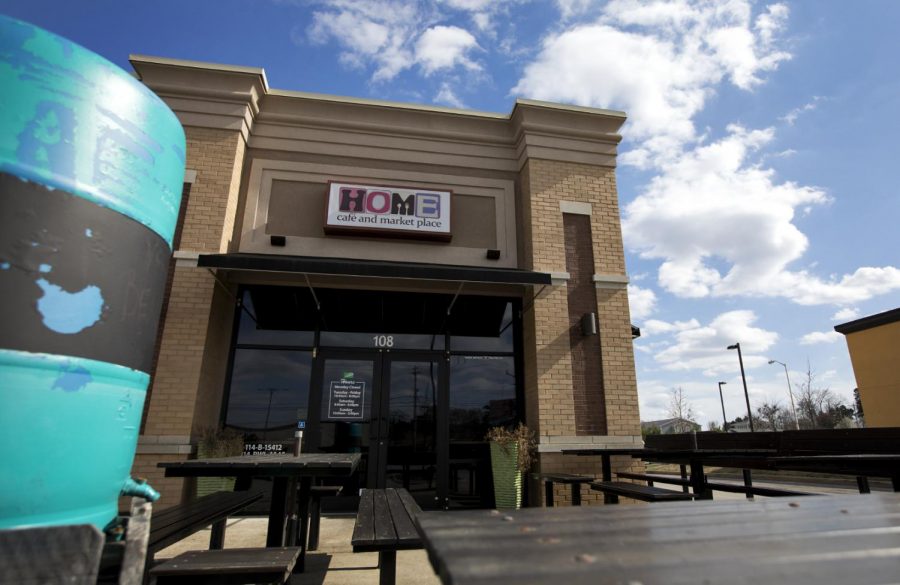Local restaurants provide ‘sanctuary’ for workers
February 28, 2017
Sanctuary restaurants are a part of a new and budding movement that is changing the face of the restaurant industry by creating an active voice in the pursuit of equality for immigrants. The movement stands in solidarity with all deviations of human rights by a public proclamation of zero tolerance for xenophobia, racism and sexism.
The Sanctuary Restaurant movement and its partners are goal-oriented in providing a safe environment for everyone in the restaurant industry.
The temporary travel ban enacted by President Trump in January has inspired many dining establishments in the U.S. to become sanctuary restaurants. There are nearly 300 registered sanctuary restaurants in the U.S., according to sanctuaryrestaurants.org.
For individuals affected by legislative changes, sanctuary restaurants aim at providing an inviting workplace and welcoming dining experiences to customers regardless of their background or citizenship.
The Sanctuary Restaurant movement was developed in 2016 from a joint coalition of the Restaurant Opportunities Center, or ROC, United and Presente.org to protect immigrants as well as to defend their economic importance in the restaurant industry.
There are nine Kentucky restaurants that have joined in the movement throughout the state, mostly concentrated in Louisville and Lexington.
However, in the Bowling Green community, two of the nine restaurants are available and registered with the movement. Zest and Home Café & Marketplace are dedicated to upholding the Sanctuary Restaurant mantra of “a place at the table for everyone.”
Josh Poling, owner of Home Café & Marketplace, explained the purpose of his restaurant’s participation as a sanctuary restaurant.
“Home Cafe becoming a sanctuary restaurant was our way of saying we need to have a conversation about this,” Poling said.
According to the the National Restaurant Association, the restaurant industry workforce is projected to increase by 14 percent in a decade. However, this potential increase is met with opposition, because of the lack of labor available.
In 2015, the United States Bureau of Labor Statistics sampled data for the employment of foreign-born workers in comparison to native-born workers above the age of 16. When focused only on the food service industry data, the employment of foreign-born workers was 7.1 percent compared to the 5.1 percent of native-born workers.
The economic dependence of immigrants is a major concern for the movement, but so is protecting and providing an industry that is inclusive of its diversity such as the restaurant industry.
Poling said that he learned some of the basics in preparation of food from working alongside skilled immigrants when he was a novice in the food industry. Through personal encounters like Poling’s, the Sanctuary Restaurant movement is adamant in sheltering the diversity of life that makeups their industry.
Nationwide, the Sanctuary Restaurant movement, although new, has sparked conversation in the restaurant industry. Across the nation, thousands of workers and consumers are joining the movement. The future of the movement is uncertain, but many restaurants and supporters are optimistic in the growth and continuation of sanctuary restaurants.
“It will only continue to grow,” Poling said. “I cannot stress enough how important immigrants are to the food industry. I once read restaurants are the last great meritocracy on earth. I’ve worked next to drug dealers, preachers, Christians, Muslims, atheists, felons, convicts, mothers, grandmas … you name it, I’ve probably worked next to them, and the only thing that matters in a restaurant is can you do what it takes to get through service,” Poling said.
Reporter Danielle Chavis can be reached at 270-745-6288 and [email protected]




















![Students cheer for Senator at Large Jaden Marshall after being announced as the Intercultural Student Engagement Center Senator for the 24th Senate on Wednesday, April 17 in the Senate Chamber in DSU. Ive done everything in my power, Ive said it 100 times, to be for the students, Marshall said. So, not only to win, but to hear that reaction for me by the other students is just something that shows people actually care about me [and] really support me.](https://wkuherald.com/wp-content/uploads/2024/04/jadenmarshall-600x422.jpg)



